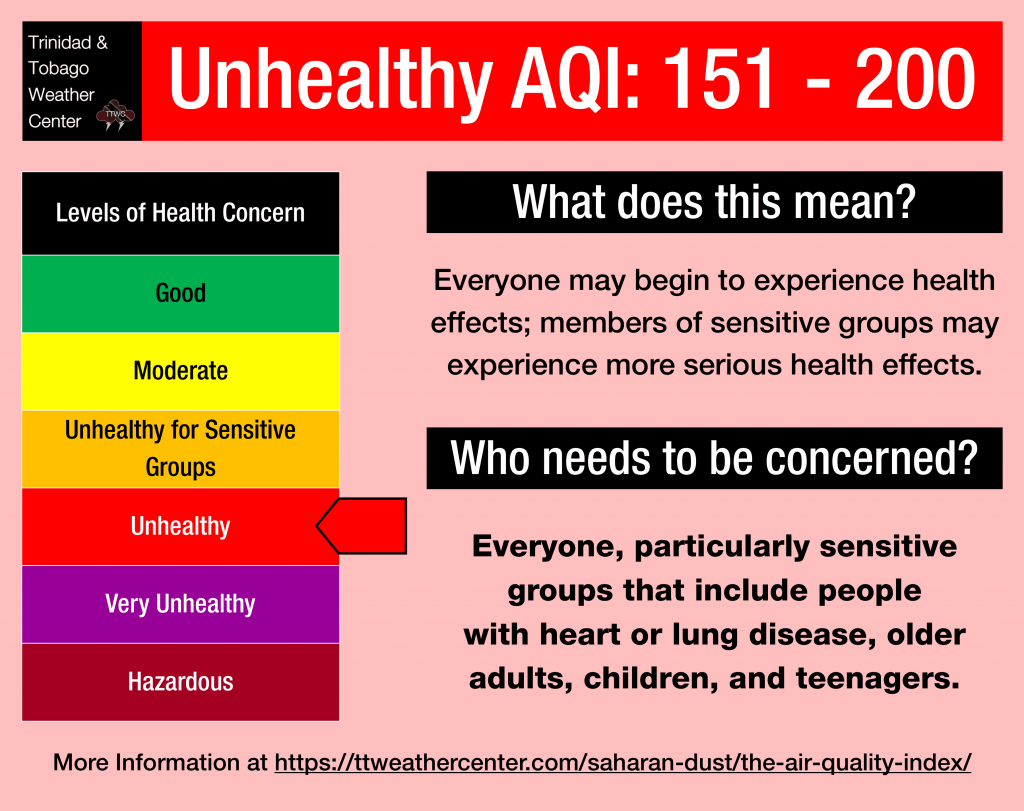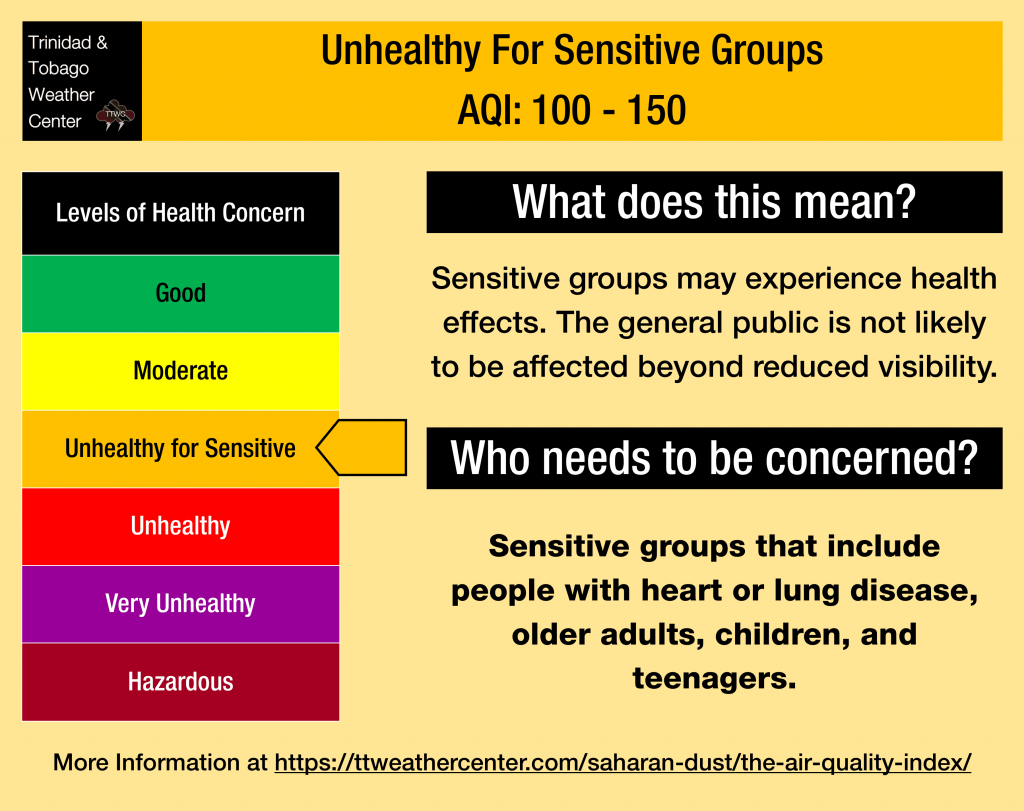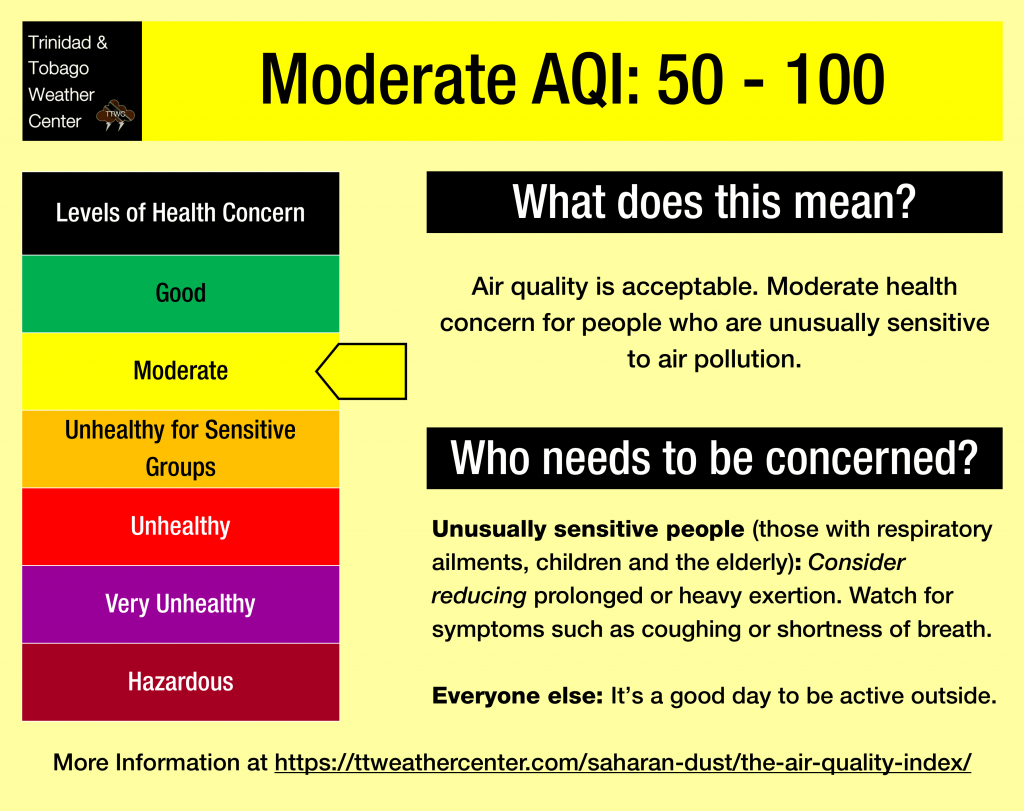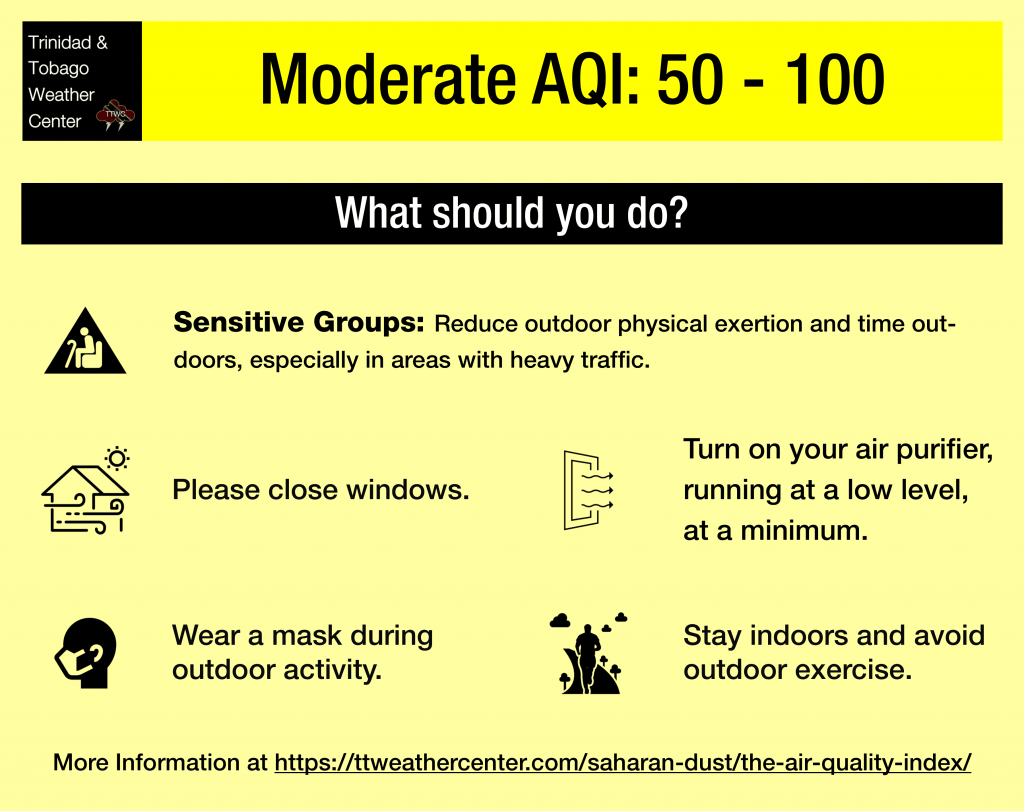A significant surge of Saharan Dust is forecast to begin affecting the Lesser Antilles, including Trinidad and Tobago, from midnight tonight (Friday night) through early next week. Air quality levels are likely to reach levels that are considered unhealthy for sensitive groups at a minimum. For islands further north, air quality levels may reach unhealthy levels for the general public.
What you need to know
— Saharan Dust Surges: From tonight (Friday) through Tuesday, June 4th, 2025, a significant, high-concentration surge of Saharan Dust is forecast to move across the Lesser Antilles. While improvement is forecast for the northern half of the island chain by mid-week, moderate concentrations of dust are expected to remain present through the following weekend across the southern half, including Trinidad and Tobago (T&T). Another moderate to high concentration surge is forecast to arrive by late next weekend and continue into the subsequent week.
— Impacts: Air quality is forecast to drop between moderate and unhealthy between May 31st and June 3rd, generally remaining between good and moderate levels from June 4th through June 9th.
— What Should You Do: Throughout the forecast period, everyone is advised to take necessary precautions, particularly those in sensitive groups, starting from June 4th.
Current AQI Levels Across T&T
As of 3:00 PM, May 30th, 2025, the official air quality monitoring stations from the Environmental Management Agency (EMA) at Beetham outside of Port of Spain, Point Lisas, and San Fernando report good air quality while all other stations (Signal Hill, Point Lisas, Toco, Arima) are not currently transmitting PM2.5 or PM10 data.
Unofficial air quality monitoring stations at Longdenville and Woodbrook report good air quality.
These measurements are based on PM2.5 (particulates smaller than 2.5 micrometers in size, typically associated with increases in Saharan Dust, vehicle exhaust, and smoke) and PM10 particulates.
Outside of rainfall, visibility, used as a proxy for Saharan Dust concentrations, at the A.N.R. Robinson International Airport at Crown Point, Tobago, and at Piarco, visibility is at or above 10 kilometers.
Saharan Dust Forecast For T&T

May 30th: Mild to moderate concentrations of Saharan Dust with a significant increase in dust levels overnight. During the day, air quality at good to moderate levels.
May 31st through June 3rd: High to significant concentrations of Saharan Dust with air quality and visibility significantly degraded. Air quality levels are likely to remain between moderate and unhealthy during this period, with higher dust levels generally north of T&T. Horizontal visibility outside of rainfall is likely to fall between five and seven kilometers.
June 4th through June 9th: Moderate concentrations of Saharan Dust with air quality generally at good to moderate levels. Visibility marginally affected.
What does this mean for you?


Based on the latest forecast, air quality levels are expected to decrease to unhealthy levels for islands north of Trinidad and Tobago, with potentially unhealthy air quality across Tobago and northern Trinidad between May 31st and June 2nd. At this level, everyone needs to take precautions.


Peak concentrations are likely to occur between May 31st and June 3rd; air quality levels are expected to reach unhealthy levels for sensitive groups. At this level, members of sensitive groups may experience health effects. There is an increasing likelihood of respiratory symptoms in sensitive individuals, aggravation of heart or lung disease, and premature mortality in persons with cardiopulmonary disease & the elderly.
Beyond June 3rd, air quality is forecast to remain generally at moderate levels, with only the most sensitive groups marginally affected.


We’re now in a period where the Intertropical Convergence Zone, tropical waves, and occasional tropical cyclones may shield Trinidad and Tobago from the Saharan Dust events. While tropical waves are notable in moving dust across the Atlantic and the Eastern Caribbean, these periodic tropical waves also improve air quality.
The concentration of the dust that follows the wave depends on its strength as it moves off the West African Coast. This is because of stronger thunderstorms across Central Africa. As strong winds move downward and outward from these thunderstorms, they kick up dust as they move across parts of the Saharan Desert and transport it into the upper atmosphere. This “plume” of dust follows the axis of the wave as it progresses westward into the Atlantic.
Dust that enters the upper levels of the atmosphere can then be transported across the Atlantic Ocean. The plumes of dust eventually affect the Eastern Caribbean.
Larger, more concentrated plumes of Saharan dust begin in April and continue through November.











